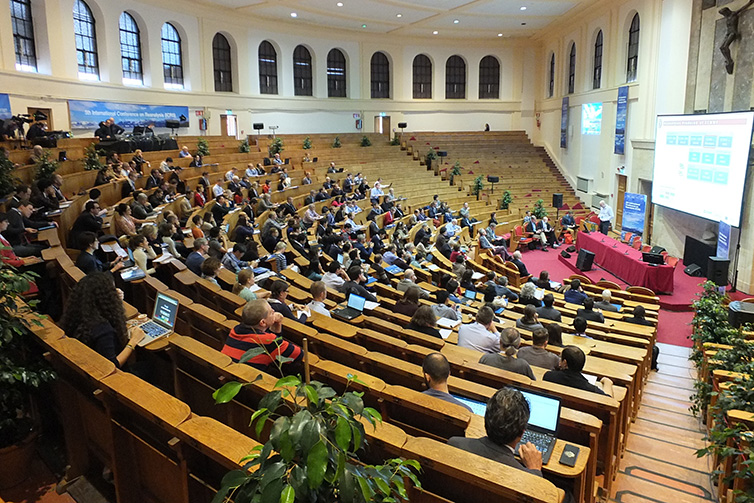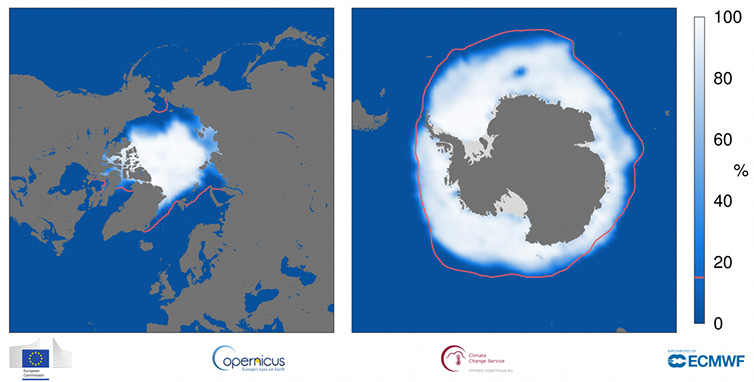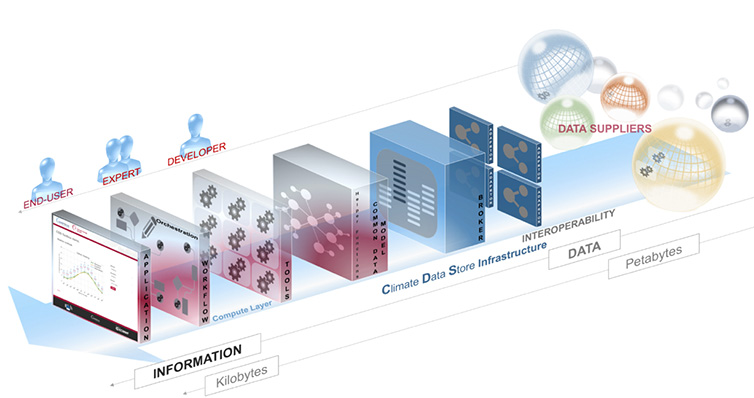

The 5th International Conference on Reanalysis took place in Rome from 13 to 17 November 2017.
After a successful conference on climate reanalysis in Rome earlier this month, the European Union’s Copernicus Climate Change Service (C3S), which is being implemented by ECMWF, is getting ready to make reanalysis results available to wider audiences.
Climate reanalysis combines models with observations to provide a full numerical description of the recent climate.
Over the next few months, a range of initiatives will enable C3S to present key results to the general public and to make quality-assured reanalysis data available in new, user-friendly ways.
Growing interest
More than 240 experts in reanalysis and representatives from the user community came together at the 5th International Conference on Reanalysis (ICR5) in Rome from 13 to 17 November 2017.
The conference, organised jointly by C3S and the World Climate Research Programme (WCRP), covered a broad range of issues:
- The status of current production systems
- Observation rescue activities
- Developments in observational databases
- Developments in data assimilation
- Applications, user requirements and feedback
- Plans for future reanalyses
Keynote presentations as well as informal discussions showed that there is growing interest in reanalysis in the public and private sectors.

During a pre-conference media briefing, the organisers explained how reanalysis can support decision-making in a wide range of sectors. From left to right: Silke Zollinger (Copernicus ECMWF), Paul Poli (Météo-France), Roberto Buizza (ECMWF), Michel Rixen (WCRP), Jean-Noël Thépaut (Copernicus ECMWF), and Simona Masina (CMCC).
"It became clear during this conference that reanalysis has become an operational service for all rather than just a tool for the scientific community,” Deputy Head of C3S Dick Dee says.
Examples presented at the conference include the use of reanalysis data in the cocoa trading and renewable energy sectors.
On the scientific front, a key issue that emerged from the talks was the need for reanalyses which take into account the interactions between different components of the Earth system, such as the ocean and sea ice as well the atmosphere and the land surface.
"Coupled reanalyses such as CERA-20C, generated at ECMWF within the European Union FP7 project ERA-CLIM2, help us to understand why the atmosphere did not warm as much as expected between 2000 and 2010,” ECMWF Lead Scientist Roberto Buizza explains.
“CERA-20C shows that, during that decade, the ocean absorbed more heat from the atmosphere, thus explaining why global temperatures did not rise as much as they did in the 1990s."
Developing the service
Head of C3S Jean-Noël Thépaut says events such as the Rome conference provide valuable insights into user needs.
“The outcomes of the conference will feed into the high-quality products that we expect from the Copernicus Climate Change Service,” he says.
C3S is already producing monthly reanalysis-based updates on climate variables such as surface air temperature, precipitation, relative humidity, soil moisture and sea ice.

The C3S sea-ice cover chart for October 2017 shows that sea ice in the Arctic (left) and Antarctic (right) was much less widespread than the long-term October average (1981–2010), indicated by the pink line.
Earlier this month, the WMO for the first time included ECMWF reanalysis data in its preliminary Statement on the State of the Climate.
C3S is now planning to produce its own state of the climate report with a focus over Europe and for a set of key essential climate variables (ECVs) at the beginning of each year. The first such report is due to be published in the first quarter of 2018.
In addition, the service will reach new audiences from December this year, when C3S climate updates will be aired four times a day for a week each month on the Euronews channel.
In a major development planned for the first quarter of 2018, the C3S Climate Data Store (CDS) is to be launched.
It will be a one-stop shop for all C3S data. In addition to reanalysis data, these include multi-model seasonal forecasts, future climate scenarios as well as other climate information, such as historical climate data records, ECV datasets and climate impact indicators.
“Users will be able to access, visualise and download the data,” Dr Thépaut says. “They will ultimately have information about the past, present and future evolution of the climate system on global, continental and regional scales at their fingertips.”

As explained in more detail in a recent ECMWF Newsletter article, the Climate Data Store is designed to meet the needs of different users, including developers, expert users and a wide range of other users, who can interact with the CDS at different levels.
